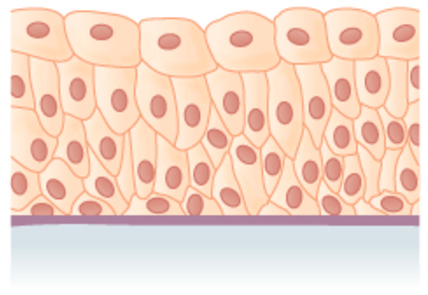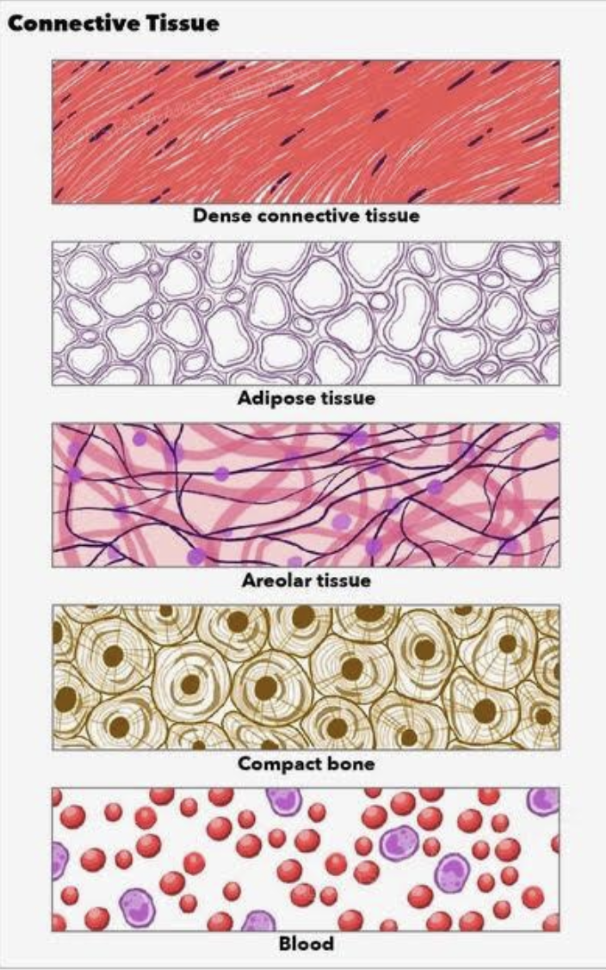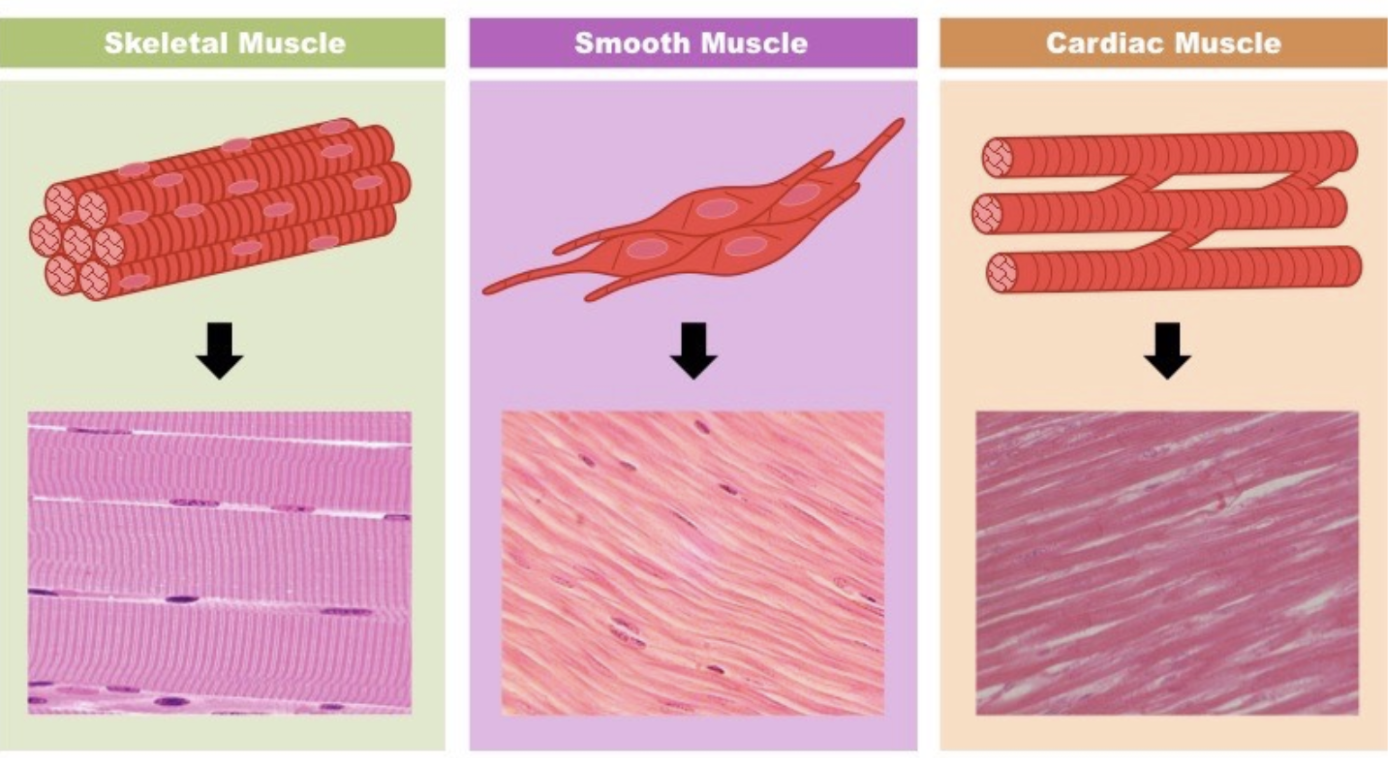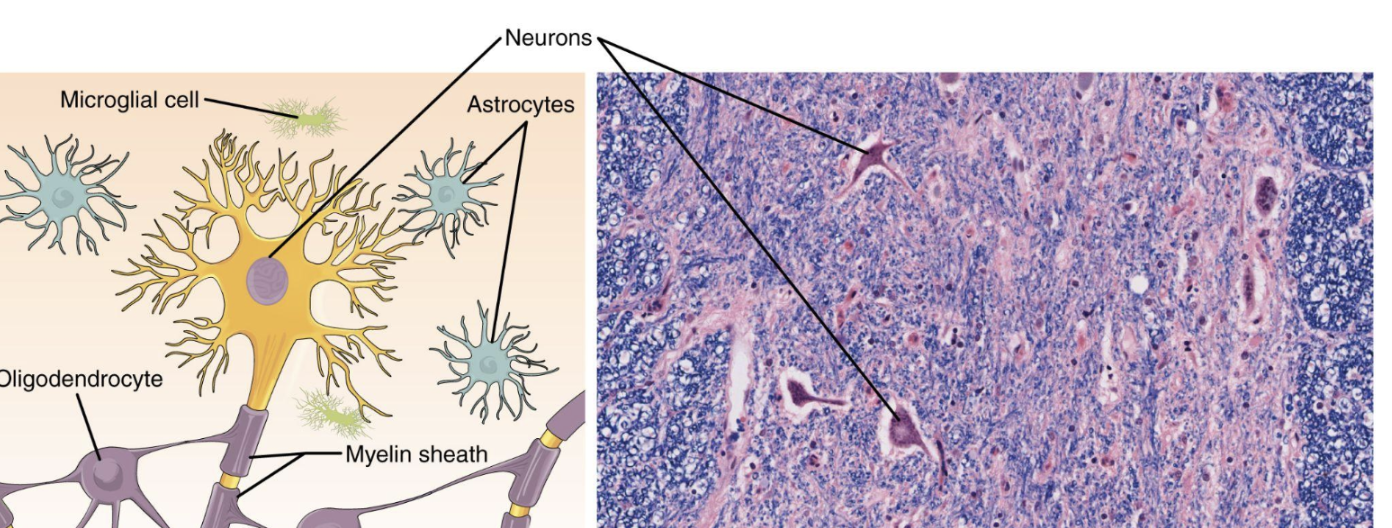Tissues
1/6
There's no tags or description
Looks like no tags are added yet.
Name | Mastery | Learn | Test | Matching | Spaced |
|---|
No study sessions yet.
7 Terms
Tissues
a group of cells that are similar in structure and perform common or related functions
The second structural level

Epithelial tissue
cells are close together and vary in shape
A covering or lining tissue
- Organs like the kidneys, heart, intestines and lungs are lines with epithelium
- Also lines inside of organs
Functions:
Protection from physical and chemical injuries
Protection against microbial invasion
Contains receptors which respond to stimuli
Filters, secretes and reabsorbs materials
Secretes serous fluids to lubricate structures

Connective tissue
Cells are not close together, separated by non-cellular material (matrix)
Most abundant & widely distributed tissue
Found in bone, cartilage, adipose tissue, blood
Functions:
Provides support for the body and helps to hold all body parts together
Protects & cushions organs+tissues
Insulates (fat)
Transports substances (blood)

Muscle Tissue
Long & thin and can contract to be shorter
Skeletal: muscles attached over bones
Cardiac: makes up the heart
Smooth: no striations, involuntary. walls of the stomach, intestines etc.
Functions:
Movement, locomotion, maintains posture, produces heat, facial expressions, pumps bloods, Peristalsis

Nervous Tissue
Made up of neuron’s.
long projections from the cell
Found in the brain, spinal cord and the nerve (main component of the nervous system)
Functions:
Regulates and controls body functions
Generates and transmits nerve impulses
Supports, insulates and protects impulse generating neuron’s
Mini grid calculations
At 40x magnification - FOV = 4.5mm
At 100x magnification - FOV = 1.8mm
At 400x magnification - FOV = 0.45mm
other structures (organs, systems, organism)
Organs: body structures made up of two or more types of tissue
Systems: a small group of organs that work together to carry out a particular task
Organism: all body systems working together to meet the needs of a functioning organism